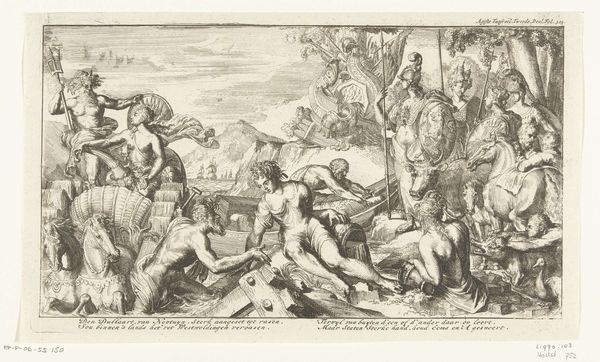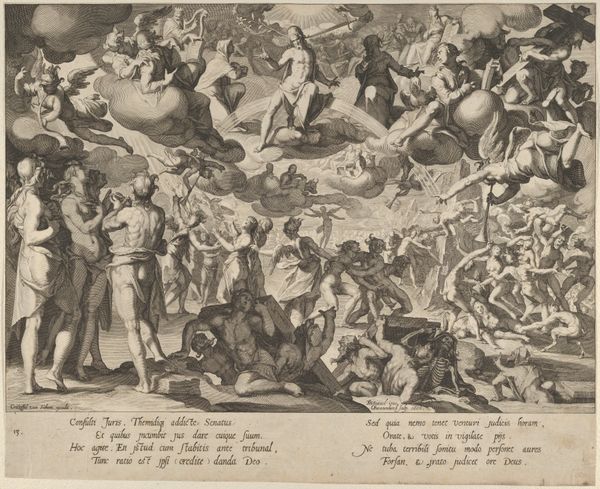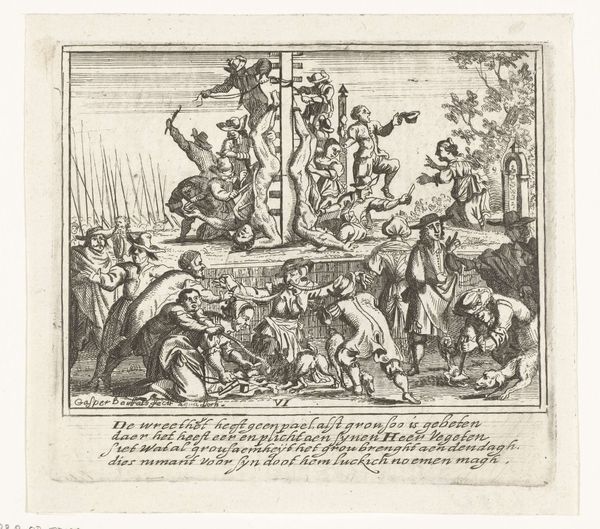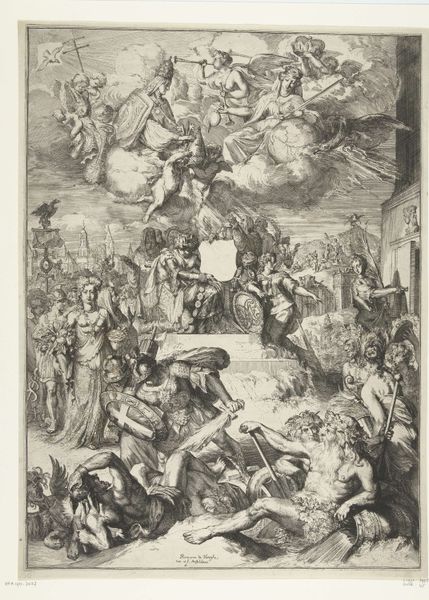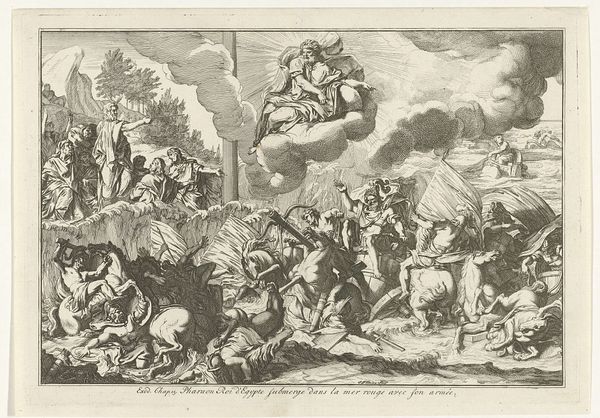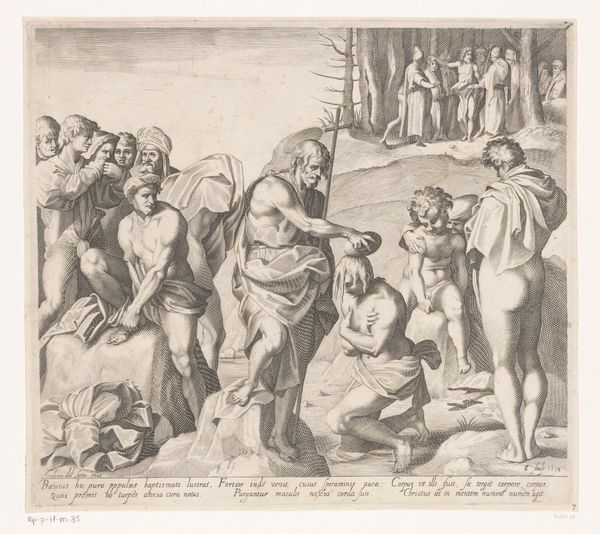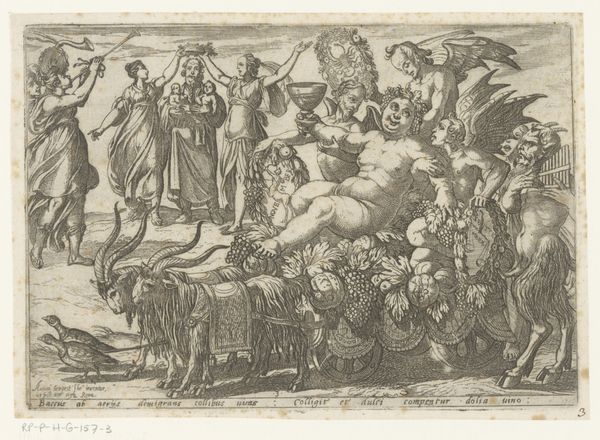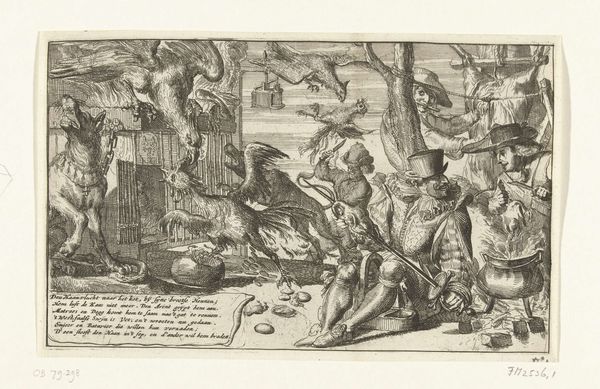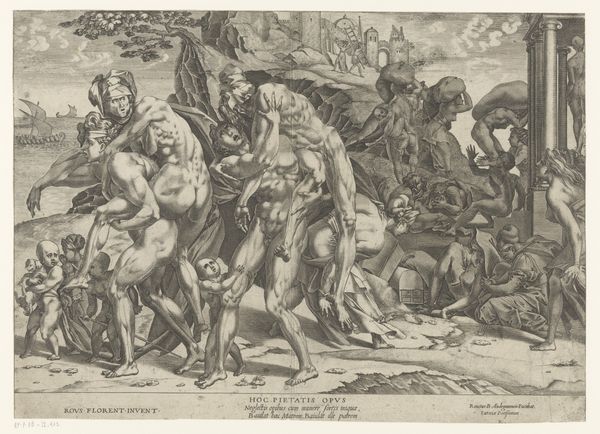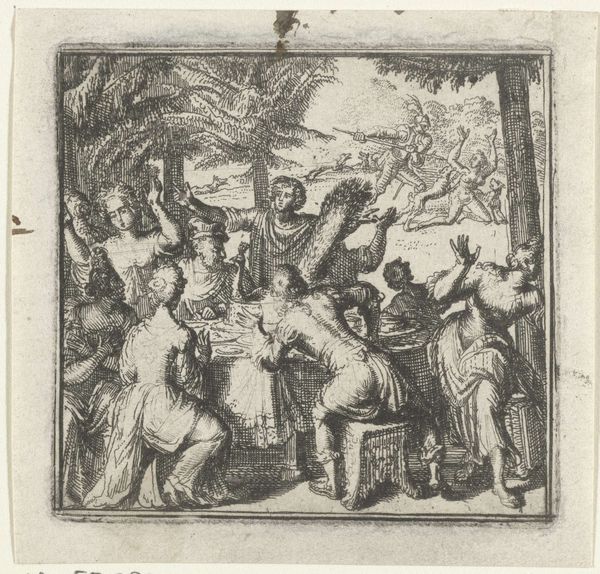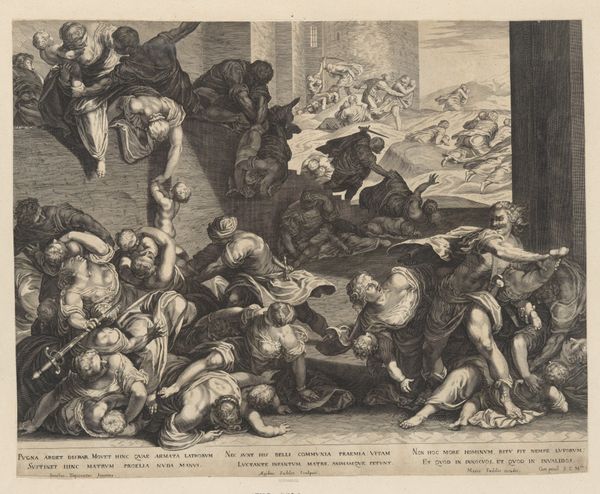
drawing, print, pen, engraving
#
drawing
#
allegory
#
narrative-art
#
baroque
# print
#
pen sketch
#
pencil sketch
#
charcoal drawing
#
pencil drawing
#
pen work
#
pen
#
engraving
Dimensions: height 234 mm, width 351 mm
Copyright: Rijks Museum: Open Domain
Curator: My goodness, there is so much activity! This is hardly a restful peace; rather, it bursts with gestures, figures, and details clamoring for attention. Editor: Indeed. We're looking at "The Time of Peace Between Nations," a print dating from 1674, crafted by Romeyn de Hooghe. It resides here in the Rijksmuseum. Curator: It certainly looks allegorical, and rather densely packed with symbolic characters. I see figures that seem to represent different cultures or regions all gathered together. Editor: Precisely. De Hooghe was working during a tumultuous period in European history, a time of shifting alliances and fragile treaties. These printed images played a crucial role in shaping public perception and justifying political actions. He was known as a master of political propaganda. Curator: So, it is meant as an optimistic vision? A peace achieved among different groups after conflict, signaled through shared ritual? I see a scale, representing Justice, or is that even-handed trade? Editor: One can read it that way. Yet there's always a power dynamic at play in such depictions, even if disguised as harmony. Consider who is centered, whose symbols are prominent, and who is marginalized or altogether missing. Curator: That's a strong point. Is the intention to unite or to reinforce a prevailing political ideology? It's intriguing how certain symbols resonate differently depending on historical context. What do you think a contemporary viewer would have made of this image versus now? Editor: They certainly had very different ways of experiencing an image like this. Today, mass media inundates us with imagery, but at this time an engraving like this would have been something novel, perhaps deeply considered. Its symbolism and visual rhetoric likely carried greater weight in shaping public opinion. Curator: Right. Today, with instant communication and globalization, an image about peace feels so complex – perhaps even naive. De Hooghe's image offers insight into 17th-century anxieties, dreams, and strategies for forging alliances in a fractured world. Editor: Absolutely, and by recognizing these historical nuances in artworks, we begin to reflect upon what constitutes 'peace' for ourselves, centuries removed from De Hooghe's workshop.
Comments
No comments
Be the first to comment and join the conversation on the ultimate creative platform.

